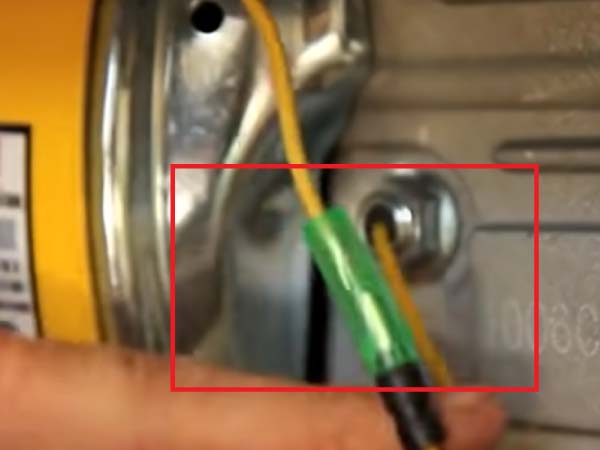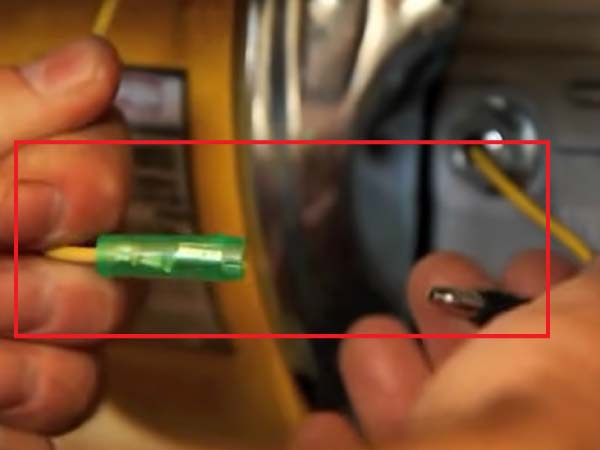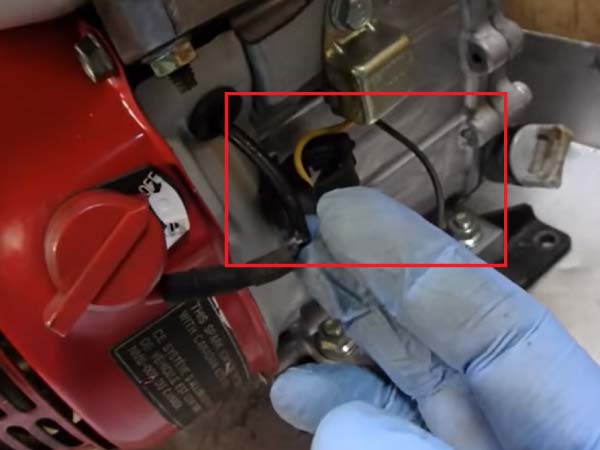How to Bypass Low Oil Sensor on Generator Easily?
In this article, we have discussed how to bypass the low oil sensor on the generator if it is preventing the unit from starting. We have explained the process for Honda, Champion, and other generators.
Most modern inverter generators and conventional generators come with a ton of safety features including low-oil shutdown and overload protection.
Low-oil protection in particular is a good safety feature. It automatically shut down the generator when the oil quantity is dangerously low.
If the generators keep running on low oil, the internal friction will cause temporary to permanent damage. That is why this feature is more than necessary for clumsy guys like me who always forget to change the oil on time.
As helpful as it is, there are times it can be a pain in the ass. Suppose you have filled your generator’s oil and it will not start. What could be the possible reason?
Well, the first thing you need to do is to disconnect the low oil sensor. You’re going to have to bypass it to check if the generator is running or not.
For that, you will have to learn to bypass the sensor.
How to Bypass Low Oil Sensor on Generator?
The location of the low oil sensor may vary a bit from generator to generator. The basic process is the same for all, but you might find it difficult to properly access the sensor.
I have written the steps for Champion and Honda generators, but you might want to check the owner’s manual to locate them.
How to Bypass Low Oil Sensor on a Champion Generator?

- The champion generator low-oil sensor is located on the front, near the fill cap. It will be near the oil cap and dipstick.
- In most cases, it will be either two yellow wires or red wires.
- Simply disconnect the two yellow wires.

- Now start the generator using a battery or manual recoil like you normally do.
- Let it run for a minute or so, then reconnect both yellow wires.
- Shut off the generator and let it rest for a minute.
- Now start the generator without disconnecting the low oil sensor wires.
- If it starts, then the troubleshooting is successful. If your generator fails to start, you know how to bypass the low oil sensor.
- If you know how to replace it, then do so. If you don’t know, hire a professional to replace or repair the low oil sensor to prevent further damage, or just use your generator to bypass the sensor.
How to Bypass Low Oil Sensor on a Honda Generator?

- The low sensor in Honda generators is located between the switch and the coil.
- It will be two black wires connected with a help of a male/female switch.
- Just disconnect both wires and start the engine.
- Let it run for a few minutes.
- After the engine warms up, connect the black wires of the low oil sensor.
- Turn off the engine and start it again.
- If it starts, the troubleshooting is successful. If it doesn’t start, you will have to use your generator by passing the low oil sensor by disconnecting both black wires.
What are the Effects of low-oil Sensor Malfunctioning?
The low-oil sensor malfunctioning prevents the generator from starting. The sensor senses low-oil pressure due to malfunctioning and sends a signal to the control panel.
If it fails and you bypass it, the generator will keep running on low oil which can result in overheating and potential internal malfunction.
if you are facing some problems related to the Carbon monoxide sensor make sure to skim this guide: safely bypass the CO sensor of a generator
Safety Instructions Before Low Oil Sensor Bypassing
- Before tangling with the sensors, make sure the generator is off. Never do anything while it is running.
- When you turn OFF the generator, wait a bit. Let’s cool down.
- Don’t carry a cigarette or anything that might ignite the fuel.
- If the two wires connected by a sensor don’t disconnect properly, don’t yank it. You might destroy the sensor. It is very fragile. Handle it with proper care.
Pros of Low Oil Bypassing:
Cons of Low Oil Bypassing:
Frequently Asked Questions – FAQs
How do you check a low oil sensor?
Most generators have it beside the oil cap and dipstick. Two wires will be connected (male/female type) together. Most sensors look green in color. If find it hard to locate it, check your owner’s manual. It is the best way to find the low-oil sensor location.
Can a generator start with low oil?
A generator can start with low oil if it doesn’t have a low oil sensor. However, it decreases the engine life since low oil in the compartment triggers internal friction. It causes overheating as well. Most generators lose their durability and longevity due to a lack of proper oil changes on time.
Can you disconnect the oil pressure sensor?
You can unplug the oil pressure sensor if your generator is not starting due to a malfunction in the sensor. You will just need to unplug both wires (male/female switch type). The low oil sensor isn’t permanently installed.

Alex Black is a seasoned electrical engineer with a remarkable 8-year track record specializing in appliances, generators, and transfer switches. With extensive hands-on experience in the field, Alex possesses a deep understanding of electrical systems and their intricate workings. Throughout their career, Alex has consistently demonstrated expertise in designing, troubleshooting, and maintaining various electrical appliances.
